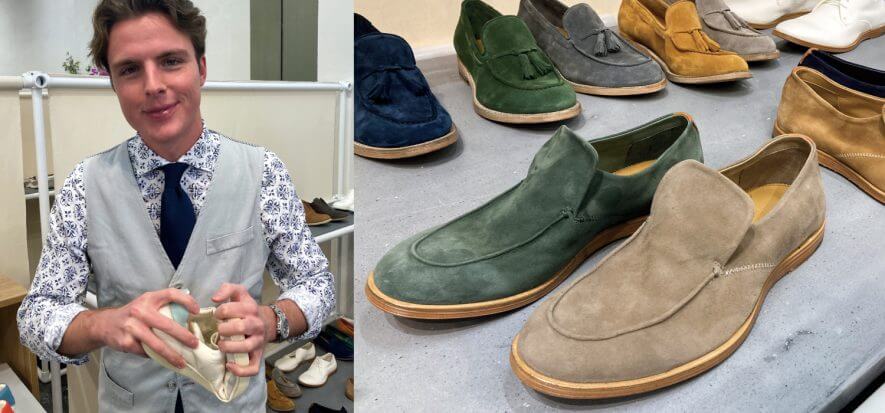“Linking traditional production processes with sustainable materials”. This is Sturlini Firenze‘s recipe in defining its shoe production as an example of bio-craftsmanship. And what are these materials? Primarily leather, but also vegetable extracts, glues, waxes and natural pigments, and recycled materials. “Where would leather end up after being used in the food industry?” asks Edoardo Boldrini (production and quality manager, left in the photo) whom we interviewed at Pitti Uomo 102. The brand’s green awareness is clear and well established. It is “an ethical vision of the production cycle and social responsibility that has led us to a precise choice”.
Sturlini’s bio-craftsmanship
Sturlini’s story began in the 1960s, when Rolando Sturlini founded Navayos shoe factory in Monsummano (Pistoia), together with his wife Anna. 30 years later, his son Alessio picked up the leadership of the company, enhancing and innovating the values of artisanal production. “Our market is that of handmade casual shoes with attention to every detail,” explains Boldrini. “Recently, we have brought our basic principles back to the production of sneakers, for which we use soft calfskins that allow an excellent fit”.
The in-house tannery
“During the period of the pandemic, we made structural investments to prepare ourselves for the time when the markets would start up again,” says Boldrini. “We made renovations to the warehouse and put in an in-house tannery for the colouring of the leathers, for which we use only vegetable tannins. This allows us to pay attention to detail and freely experiment with shades”.
The Versilia patent
Sturlini’s signature product is the (patented) Versilia processing, characterised by a very soft leather sole. “This workmanship carries forward our conception of the figure of the craftsman and of handmade,” explain Sturlini. “It is the thread that unites local craftsmanship, handed-down traditions and new technologies deriving from research into materials and processes”. Without forgetting “attention to social and environmental issues”. Bio-craftsmanship, in short.
Read also:










